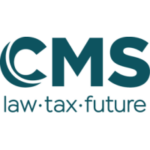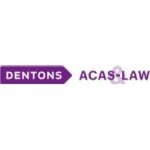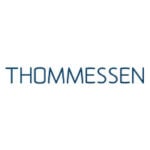-
Does your jurisdiction have a class action or collective redress mechanism? If so, please describe the mechanism and outline the principal sources of law and regulation and its overarching impact on the conduct of class actions in your jurisdiction.
A representative action, as regulated in Title 2 of Book XVII of the Belgian Code of Economic Law (“CEL”), is a judicial procedure whereby a qualified entity claims injunctive measures or redress measures (compensation) for the benefit of a group of not yet identified consumers or small and medium-sized enterprises (“SME’s”) he represents, against an enterprise allegedly liable for the collective harm caused.
Unlike in a normal judicial procedure, a personal interest of the plaintiff is not a condition for the admissibility of the claim. The entitlement of a group representative to start an action for the benefit of third parties is precisely the essence of a representative action.
The representative action was introduced in Belgium in 2014. A law of 21 April 2024 amended the regime on representative actions to simplify the procedure and to implement the EU Representative Actions Directive 2020/1828 (“RAD”). The implementation did not require many changes since the Belgian legislation was already quite compliant with the RAD.
The procedure for an action for injunctive measures is quite similar to a general cease and desist action under Belgian law.
Specific procedural rules apply to a representative action for collective redress though. The four phases of such procedure are (i) the admissibility phase, (ii) the mandatory negotiation phase, (iii) the litigation phase on the merits and (iv) the distribution and enforcement phase (see question 18).
Belgian class actions remain relatively rare, with only 12 cases filed since the introduction of the mechanism in 2014. The legislation empowers qualified entities, such as Test-Achats, to represent large groups of consumers or SMEs, lowering the barriers related to cost and complexity of individual claims. The specific procedural rules provide a structured process specifically to treat collective claims in an efficient manner. The inclusion of financial market and digital sector claims following the adoption of the Law of 21 April 2024, as well as securities class actions, opens new possibilities for collective litigation beyond traditional consumer disputes as was previously the case.
Due to the implementation of the RAD throughout the EU, the different implementation thereof across the member states may lead to forum shopping. As there are still procedural inconveniences in Belgium and most notably the long duration of the proceedings, it is unlikely that Belgium will be considered an attractive destination to initiate cross-border claims.
-
What is the history of the development of the class actions/collective redress mechanism and its policy basis in your jurisdiction?
The development of class actions, or collective redress mechanisms, in Belgium has evolved significantly over the past decades, shaped by both domestic legal tradition and European Union (EU) policy influences.
Historically, Belgian litigation was strictly bilateral, focusing on disputes between individual parties. The Belgian Judicial Code of 1967 reflected this approach, requiring personal interest for legal standing, which effectively barred collective actions. However, today’s society is more complex, governed by extensive and detailed regulations affecting large groups of people. Actions by public authorities or private entities can cause widespread so-called mass damage that impacts many individuals. This mass damage raises challenges at both the micro level (liability issues complicated by the number of victims and the scale of damage) and the macro level (procedural and judicial organization).
Pressure from EU law (e.g., the 2008 Green Paper on Consumer Collective Redress, the 2013 Commission Recommendation on common principles for injunctive and compensatory collective redress mechanisms in the Member States) and changing policy perspectives led to gradual accommodation of collective litigation forms. Until 2014, compensation claims by groups had to rely on procedural techniques that were cumbersome and inefficient such as joined actions and mandate ad agendum.
Against this backdrop, there has been a growing recognition of the need for a streamlined collective procedure mechanism. The first major legislative breakthrough came with the law of 28 March 2014 inserting Title 2 “Action for Collective Redress” into book XVII of the Belgian Code of Economic Law, which introduced the “action for collective redress” into Belgian law.
This law of 28 March 2014 allowed authorized representatives to bring legal actions on behalf of groups of consumers suffering harm from a common cause, enabling collective compensation claims. However, the scope was limited to harm occurring after 1 September 2014, and the group had to be composed of consumers with damage from a common cause. The introduction of this new Belgian legal mechanism aimed to strengthen consumer rights by overcoming the practical barriers that prevent individual consumers from seeking justice, such as lack of awareness and high legal costs. It addressed situations where individual harm may be small, but the collective economic damage is significant. By enabling consumers with shared grievances to act together, this legislation made legal action financially viable and more effective, ensuring better enforcement of consumer protection law.
The scope of the representative actions has been extended in 2018. Following the adoption of the Belgian Law of 30 March 2018 amending the Belgian Code of Economic Law, the scope of class actions was extended to include collective redress for SME’s.
Finally, the European legislator aimed to strengthen consumer rights enforcement at the EU level by creating a minimum harmonized procedural mechanism for representative actions, enhancing legal certainty and judicial cooperation across Member States with the adoption of the Directive (EU) 2020/1828 of the European Parliament and of the Council of 25 November 2020 on Representative actions for the protection of the collective interests of consumers and repealing Directive 2009/22/EC. To comply, Belgium enacted the Law of 21 April 2024 amending the Belgian Code of Economic Law, which came into effect on 10 June 2024. This law broadened the scope of collective actions to include breaches of financial legislation (e.g., Prospectus Regulation, MiFID), data protection (GDPR), and digital market rules (DMA, DSA). It also introduced a generalized opt-in regime, with consumers opting in after a decision on the merits, while allowing collective settlements on an opt-out basis. Additionally, the law enabled cross-border collective actions, allowing qualified entities from other EU states to bring actions in Belgium and vice versa.
-
What is the frequency of class actions brought in your jurisdiction, in terms of number of cases over the years and/or comparison to other types of litigation?
Class actions are not frequently brought. Since the introduction of class actions in 2014, only 12 claims for collective redress have been brought, almost all by the consumer protection association “Test-Achats”:
- Claim of Test-Achats representing travellers against the national railway operator SNCB pertaining to travel disturbances caused by strikes (introduced in 2015 and settled 2017).
- Claim of Test-Achats representing travellers against Thomas Cook pertaining to the delay of a Tenerife-Brussels flight (introduced in 2015 and settled 2017).
- Claim of Test-Achats against Events Belgium and 4 other defendants pertaining to the prohibited resale of concert tickets at exorbitant prices (introduced in 2016 and settled with at least 1 defendant).
- Claim of Test-Achats against Proximus pertaining to the forced replacement of purchased decoders by rented decoders (introduced in 2017 and declared unfounded in 2019).
- Claim of Test-Achats against Volkswagen pertaining to the manipulation of the NOx emission figures for cars produced by Volkswagen (“Dieselgate”, introduced in 2017 and settled in April 2024).
- Claim of Test-Achats against Ryanair pertaining to the cancellation and delay of Ryanair flights during the summer of 2018 (introduced in 2018 and settled).
- Claim of Test-Achats against Groupon pertaining to a commercial offer on diapers (introduced in 2018 and settled before the admissibility phase).
- Claim of Test-Achats against Facebook pertaining to the data of Facebook users shared with the marketing company Cambridge Analytica without permission (introduced in 2018).
- Claim of the Belgian Ombudsman Service for Consumers against 6 energy suppliers pertaining to early termination fees (introduced in 2018).
- Claim of Test-Achats against Apple pertaining to the programmed obsolescence of the iPhone 6, 6 Plus, 6S and 6S Plus (introduced in 2020).
- Claim of the Brussels Hotel and Catering Federation (FHB) and the Neutral Union for the Self-Employed (SNI) against Unisono, a platform created by Sabam, Playright and Simim to simplify the collection of copyright royalties for music played in establishments (introduced in 2021).
- Claim of Test-Achats against Apple pertaining to App Store practices imposing up to 30% commissions on music streaming services like Spotify, Deezer, YouTube Music, Soundcloud, Amazon Music, Tidal and Qobuz to offer their services on iPhones and iPads via its App Store, which the streaming companies are passing on to consumers who subscribe via the Apple App Store (introduced in 2025).
Class actions are very rare compared to ordinary civil proceedings.
-
Are there certain courts or types of claims that are most prevalent (for example competition vs commercial litigation generally)?
Historically, the focus of collective redress litigation centred around consumer rights (against Volkswagen or telecom operator Proximus) and passenger rights (against. Ryanair, Thomas Cook or the national railway operator SNCB).
Since 2018 representative actions can also be brought for the account of a group of SMEs, it seems that only one action has been brought so far (claim of the Brussels Hotel and Catering Federation (FHB) and the Neutral Union for the Self-Employed (SNI) against Unisono).
-
What is the definition of 'class action' or 'collective redress' relevant to your jurisdiction?
The collective redress action (“action en réparation collective/rechtsvordering tot collectief herstel”), as regulated in Title 2 of Book XVII of the Belgian Code of Economic Law, is a judicial procedure whereby a qualified entity meeting the requirements in Article XVII.39 claims injunctive measures or redress measures (compensation) for the benefit of a group of not yet identified consumers or SME’s he represents, against an enterprise allegedly liable for the collective harm caused.
-
What are the general 'triggers' for commencement of a class action or collective redress in your jurisdiction from a factual perspective?
The starting point is the existence of collective harm or mass damage caused by a breach of contract or a violation of specific laws or regulations by an undertaking. In Belgium, class actions are primarily led by the consumer organization Test-Achats. Most cases involve consumer protection issues such as travel disruptions, flight delays, ticket resale, telecom equipment, automotive emissions, flight cancellations, commercial offers, data privacy, energy fees, and product obsolescence.
It can be assumed that Test-Achats investigates various harmful practices following complaints from consumers and conducts an initial analysis of the likelihood of success of a class action. The number of complaints and the strength of the evidence therefore play an important role. For example, Apple has been fined by the European Commission for its Apple Store practices, which were deemed unfair, distorting competition, and illegal.
Some of these cases have received significant media attention, which can prompt consumer organizations to initiate class actions (e.g., Dieselgate). Another trigger can be that the harmful practices occur in multiple countries, leading to coordinated actions by consumer organizations. For instance, the Test-Achats action against Apple concerning Apple Store practices is led by Euroconsumers – the umbrella consumer organization of which Test-Achats is a member – and coordinates class actions or group claims in Belgium, Italy, Spain, and Portugal.
-
How do class actions or collective redress proceedings typically interact with regulatory enforcement findings? e.g. competition or financial regulators?
There is no specific interaction and both procedures can exist in parallel. However, findings of a regulatory body could be used in any action (including collective redress action) to support the alleged infringement.
-
What types of conduct and causes of action can be relied upon as the basis for a class action or collective redress mechanism?
Legal grounds for a representative action are of course the consumer protection rules mentioned in Directive (EU) 2020/1828 on representative actions, but in addition and more generally any contractual liability can be invoked and (since SME’s can also be represented) also some Belgian laws governing specific b2b relations, such as those governing commercial agency, distribution agreements and precontractual information obligations in franchise and other cooperation agreements (XVII.37 CEL).
-
Are there any limitations of types of claims that may be brought on a collective basis?
Even if a claim is filed by a qualified entity representing consumers or SME’s (see question 10) and is based on one of the limited infringements (question 8), the court can still declare it inadmissible if it appears that the action for collective redress does not seem more efficient than a standard judicial procedure. Class actions should benefit procedural economy and provide more efficient protection to consumer and SME’s than ordinary court proceedings. When assessing this condition, the judge can consider multiple criteria such as the underlying facts, the potential damage, the size of the potential group, etc. The judge has a large margin of appreciation, but a collective redress action will be most obviously appropriate when there is damage scattered over an important number of consumers or SME’s, all suffering a very similar (albeit individually limited) damage, that can therefore easily be compensated in a general, without need to study and individualize the situation of every victim.
When a representative action for collective redress is impossible or declared inadmissible, the main alternative, is to have multiple claimants join their respective claims in one procedure (Article 30 Judicial Code). This can be done by one writ of summon with multiple claimants (Article 701 Judicial Code), or one writ of summon with follow-up voluntary interventions by new claimants, or by requesting to join cases that were initiated by several writs of summons. The general condition though is that the claims are so closely connected that it is desirable to hear and judge the claims together in order to avoid solutions that may be incompatible if the cases were tried separately. Moreover, the intervention may not delay the main case.
In some cases, a pilot case is launched with one plaintiff, followed, in case of success by multiple new claims invoking the precedent of that claim. Even though the pilot judgement has no actual res iudicata value in favour of third parties, they still can invoke the judgment as a rebuttable presumption.
-
Who may bring class action or collective redress proceeding? (e.g. qualified entities, consumers etc)
Only qualified entities representing consumers or SME’s can start representative actions. The law of 21 April 2024 slightly changes the conditions for being a qualified entity.
A qualified entity should be recognized as such by the competent Minister. To obtain such recognition, its statutory purpose should be the protection of the interests of consumers or SME’s, it may not seek profit and it should be active for at least 12 months. It should be solvable, independent and free from external influence. It should publish information proving these conditions are satisfied.
Against a refusal of recognition, an appeal before the Council of State is possible. The most recent association to be recognised was “ivzw Bureau Européen des Unions de Consommateurs”” on 31 March 2025.
The Consumer Ombudsman Service can also act as a group representative (Article XVII.39, 3° CEL). This is the autonomous public service providing advice on consumer protection. The Consumer Ombudsman Service can only act until the mandatory negotiation stage and needs to be replaced by a qualified entity in case of litigation on the merits.
The new regime also provides for an automatic recognition of foreign legal entities competent in another Member State of the European Union to bring cross-border claims (Article XVII.1, §2 CEL).
The recognition entitles the entity to initiate both domestic and transnational representative actions. It is valid for an indefinite term but compliance with the conditions will be checked at least every 5 years and can be revoked at any time whenever it appears that the conditions are not met anymore (Article XVII.1/1 CEL).
When a representative action is initiated, the judge will check in the admissibility phase whether the plaintiff is a qualified entity and whether its statutory object is in direct relation with the action (Article XVII.36, 2°). Since every representative must be recognised to bring a collective claim, the suitability of the representative should not be called into question. One exception though: when several qualified entities candidate to represent the same group, the court will choose the most suitable one. Moreover, both the defendant and the court could raise doubt on the group representative still meeting all the requirements, for example regarding transparency and independence. In such a case, the court could still examine the current suitability of the group representative.
An entity without Ministerial recognition can apply for an ad hoc approval by the court when filing its request for a specific domestic representative action. This recognition will only apply to said action.
-
Are there any limits on the nationality or domicile of claimants in class actions or collective redress proceedings?
Qualified entities in another EU member state can also act as a group representative in a Belgian representative claim (Article XVII.1, §2 CEL).
Foreign beneficiaries can also be represented in a collective redress action, in which case opt-in shall always apply.
-
Are there any limitations on size or type of class?
Collective actions are limited to claims brought by qualified entities on behalf of consumers or SME’s.
In Belgium, there are no strict legal limitations on the minimum or maximum size of a class for collective redress actions. Instead, admissibility depends primarily on whether the collective action is more efficient and appropriate than individual claims, with courts assessing the size and nature of the group as part of this efficiency test. For example, an action with a potential group of 183 consumers was declared admissible in 2016.
-
Are there any requirements or prohibitions in sourcing this class?
There are no specific prohibitions in sourcing the class. The class is formed after the decision granting the claim on the merits (see question 16). To enable class members to make an informed choice about whether to opt in, it is essential that they receive notification of the decision on the merits. This decision is published in the Official Gazette of Belgium and on the Federal Public Service Economy’s website, following the expiration of the appeal period. In exceptional circumstances, the court may require additional forms of notification, such as publication in newspapers, magazines, or on websites. Furthermore, if the defendant knows or could easily know the identities of the class members, the court can order the defendant to individually notify the class members of the decision on the merits at the defendant’s own expense. Regardless of the notification method, the four-month opt-in period always begins the day after the decision on the merits is published in the Official Gazette of Belgium.
-
Which courts deal with class actions or collective redress proceedings?
The courts of Brussels are exclusively competent to deal with class actions or collective redress proceedings (Article XVII.35 CEL). Only the territorial competence has been explicitly provided for in the legislation, leaving the option to the claimants to bring the claim for collective redress before either the enterprise court of Brussels (for example in the cases against Thomas Cook and telecom operator Proximus) or the court of first instance of Brussels (for example in the case against SNCB, the national railway operator).
-
Are there any jurisdictional obstacles to class actions or collective redress proceedings?
There are no actual obstacles, the length of the procedure being a burden though, starting with the admissibility phase. The law of 21 April 2024 aims at speeding up the admissibility phase.
-
Does your jurisdiction adopt an “opt in” or “opt out” mechanism?
Except if the parties themselves agree otherwise in the negotiation phase, the opt-in system will always apply. In an opt-in system, only the members of the group that expressly choose to, will benefit from the redress. The concerned consumers or SME’s will need to make an explicit opt-in declaration within 4 months after the judgement confirming liability of the defendant (Article XVII.55/1 CEL). It is obvious that opt-in in these circumstances will have more success, than the previous system where one had to opt-in under the veil of ignorance on the outcome of the case.
The opt-in system is mandatory and the parties cannot agree otherwise, in two cases: (i) with regards to consumers or SME’s who do not habitually reside in Belgium (Article XVII.45 §1 7° CEL) and (ii) claims for redress of physical or moral collective harm (Article XVII.45 §1 7° CEL). In an opt-out system, all members of the group, as defined in the admissibility decision, benefit from the collective redress, except those that expressly will choose not to.
-
What is required (i.e. procedural formalities) in order to start a class action or collective redress claim?
A group representative will bring a claim on behalf of the group before the competent court of Brussels. Only one representative can act for each distinct group. If there are distinct groups, several representatives can therefore act, for example one for consumers and the other for SME’s. If there are two group representatives for the same group, the judge will determine the most appropriate group representative (Article XVII.40, §2 CEL).
The claim for collective redress can be brought by filing a request before the competent court of Brussels that must contain proof that the conditions of admissibility are fulfilled, a description of the collective damage and a description of the group for which the group representative intends to act (Article XVII.42, §1 CEL). The plaintiff should however specify the demanded remedy in order to provide clarity to the defendant and enable possible negotiations already starting in the admissibility phase. The request should also disclose the litigation funder if any (Article XVII.42, §1, 6° CEL).
-
What other mandatory procedural requirements apply to these types of matters?
Specific procedural rules apply to a representative action for collective redress. The four phases of the procedure are (i) the admissibility phase, (ii) the mandatory negotiation phase, (iii) the litigation phase on the merits and (iv) the distribution and enforcement phase
In the admissibility phase the court basically checks the admissibility conditions:
- The status of the plaintiff as a qualified entity (see question 10).
- The claim is based on one of the specific legal grounds entitling to file such a representative action (see question 8).
- The representative action seems more efficient than a standard judicial procedure.
The admissibility phase is treated in succinct debates, or at least within 6 months (Article XVII.43 CEL).
Once the claim is declared admissible, there is a mandatory negotiation phase (see question 26-27)
If the parties have not succeeded in reaching an agreement during the negotiation phase, they will exchange written submissions on the merits in the litigation phase, according to proceedings similar to ordinary judicial proceedings, and the court will assess the claim on the merits.
The group of beneficiaries is determined after a decision granting the claim that beneficiaries opt-in, within a period of 4 months (Article XVII.55/1 CEL).
In the final distribution and enforcement phase a claims handler will be appointed to ensure the beneficiaries receive the compensation they are entitled to. The claims handler is paid by the defendant.
-
Are normal civil procedure rules applied to these proceedings or a special set of rules adopted for this purpose?
Book XVII provides the general framework for collective redress claims, imposing certain procedural requirements specifically tailored for class actions. These requirements are distinct from the normal civil procedure and are designed to address the complexities of collective harm and group litigation efficiently and fairly.
The most striking difference compared to ordinary civil procedures is that representative action proceedings entail four distinct phases (see question 18). The overall structure of these proceedings is fundamentally different from ordinary civil litigation due to the specific nature of class actions.
However, Book XVII refers to the Judicial Code and the procedural rules therein. These procedural rules themselves follow the general rules of the Judicial Code. For example, where reference is made to ‘succinct debates provided for in Article 735 of the Judicial Code’, these procedures follow the general rules of the Judicial Code for succinct debates.
-
How long do these cases typically run for?
The duration of the entire procedure – from admissibility to settlement or final decision – depends entirely on the specifics of each case.
- Some parties may be inclined to accept a settlement quickly. For example, the Test-Achats/Thomas Cook case was settled 1 year and 5 months after the claim was introduced. In contrast, litigation can last several years, as demonstrated by the Dieselgate case, which lasted 7 years before reaching a settlement.
- On average, an action for collective redress can be expected to take around four years to reach a final judgement on the merits, although it may take longer.
There is no typical duration for these proceedings, but it is likely that many will take multiple years, considering the multiple phases of the proceedings and especially if appeals are filed.
Under the previous regime, experience shows that the Belgian class action requires a lot of patience, because of a long first phase of the trial, the so-called admissibility phase. In first instance alone (before any appeal) this phase took 4 months in the Proximus case, 6 months in the Thomas Cook case (delayed flight) or even 17 months in the well-known Dieselgate case. This admissibility phase is now simplified and shortened.
Since 10 June 2024, the admissibility debate should be handled as in “succinct debates” or at least within six months. It seems unlikely that this will succeed. However, as only one new class action has been introduced recently, there is currently no factual information available to indicate the actual time required for the admissibility phase under the new rules.
The negotiation phase lasts three to six months (extendable to a maximum of 12 months) (Article XVII.45, §1 CEL), If negotiation fails, then a procedure on the merits of the case will likely average around two years.
It remains to be seen how the new procedural framework established by the Law of 21 April 2024 will impact the typical duration and whether it will help expedite these proceedings.
-
What remedies are available to claimants in class action or collective redress proceedings?
The class actions do not deviate from general contractual and tort law, meaning that the same remedies are available. The collective damage can either be redressed in kind or by equivalent. Remedies consisting of damages, repair, replacement, price reduction, contract termination or reimbursement of the price paid are available.
In the event of damages, the judge will have to determine whether he grants a global award to the whole group who then must divide said amount or whether he grants an individualised amount to every injured member of the group (Article XVII. 54, §1, 7° CEL).
-
Are punitive or exemplary damages available for class actions or collective redress proceedings?
No, as a principle in Belgian law punitive damages are forbidden. The principle under Belgian law is full compensation meaning to restore damage caused to the injured party by placing the injured party in a position as if the damaging event did not take place, but nothing more than that.
-
Is a judge or multiple judges assigned to these cases?
Book XVII of the Belgian Code of Economic Law does not provide any special rules regarding the judge or judges assigned to collective redress cases. Therefore, a single judge or a panel of judges may be assigned to these cases, in accordance with the general rules applicable to the competent courts in Brussels.
At the Brussels Court of First Instance, each case is in principle assigned to a single judge (Article 91 Judicial Code). However, the President of the Court of First Instance may decide to assign a case to a chamber composed of three judges.
In the Brussels Enterprise Court, cases are assigned to a chamber consisting of one professional judge and two so-called “judges in commercial matters.” These commercial judges are not professional judges; they are generally selected from the business community.
Finally, cases before the Brussels Court of Appeal are assigned to a chamber composed of one judge, or where the complexity or importance of the case or special objective circumstances so warrant, the First President of the Court of Appeal may, on his own initiative, assign cases to a chamber composed of three judges (Article 109bis Judicial Code).
-
Are class actions or collective redress proceedings subject to juries? If so, what is the role of juries?
No, juries do not play any role in class actions.
-
What is the measure of damages for class actions or collective redress proceedings?
Collective damage is defined as “the totality of all individual damages that have a common cause and that the members of a group have suffered” (Article I.21, 1° CEL). This could refer to one singular event causing damage to multiple injured individuals (e.g., a delayed flight). It could however also refer to situations where people are exposed over a longer period of time, to an alleged infringement (for example programmed obsolescence of smartphones in the case against Apple).
-
Is there any mechanism for the collective settlement of class actions or collective redress proceedings?
As soon as the court declares the claim admissible, the parties are legally obliged to negotiate during three to six months (extendable to a maximum of 12 months) (Article XVII.45, §1 CEL), before the court can be seized again. The law even provides for a possibility for the judge to appoint a mediator with approval of the parties in this stage to guide the negotiations (Article XVII.45, §2 CEL). The court may end the negotiation phase at any time and order the start of the litigation phase if one of the parties remains passive for a period of 30 working days (Article XVII.45, §4 CEL). The assessment of the passive attitude is a discretionary decision of the court.
The settlement agreement should specify, among others, the detailed description of the collective damage which is the subject of the agreement, the description of the group (and possible opt-put instead of opt-in (see question 16), the amount to be paid by the defendant to the group representative; this amount may not exceed the actual costs incurred by the representative , the guarantees to be provided by the defendant, where appropriate, etc. (Article XVII.45, §3 CEL).
The conclusion of a collective redress agreement does not imply any admission of liability or guilt on the part of the defendant (Article XVII.46 CEL).
Of the 12 collective redress actions, at least 5 have been settled through an agreement.
-
Is there any judicial oversight for settlements of class actions or collective redress mechanisms?
The collective settlement adopted during the mandatory negotiation phase needs to be homologated by the judge who declared the claim admissible (Article XVII.49 CEL). The homologation judgement will also appoint a claims handler.
The judge will have to determine whether the collective settlement contains the required mentions. The judge may ask the parties to complete it or amend (Article XVII.49, §1 CEL).
The judge can refuse homologation if (1) the agreed redress is manifestly unreasonable, (2) the time limit set for members of the group to opt in to obtain individual redress is manifestly unreasonable, (3) the additional disclosure measures are manifestly unreasonable, (4) the remuneration of the group representative exceeds the costs actually incurred by him or (5) the compensation is contrary to mandatory law or is unenforceable (Article XVII.49, §2 CEL).
-
What are the top three emerging business risks that are the focus of class action or collective redress litigation?
The top three emerging business risks most likely to lead to class actions are:
- Data breaches and other violations of GDPR appear to be cases with the typical ingredients that make representative actions relevant: scattered effects and consumers with a high degree of “rational apathy”. We expect this could be one of the most relevant grounds for future class actions.
- One can also expect investor protection, securities fraud, or other financial services infringement to trigger class actions since the law of 21 April 2024 adds regulations and directives pertaining to securities markets and financial services such as MIFID II to the scope.
- The Belgian law does not allow for climate litigation, generally based on tort law, to be initiated through representative actions. While uncertain how the legislation pertaining to class actions will evolve, it is possible that either on an EU-level or on the national level these types of claims will fall into the scope.
-
What trends in litigation are evident in the last three years in your jurisdiction in respect of class actions?
Some expected that the broader scope and improved procedural rules under the Law of 21 April 2024 would lead to a rise in filings. However to our knowledge, almost one year after the adoption of the new procedural rules only one new class action has been introduced (claim of Test-Achats against Apple). It seems unlikely that there would be a sudden surge in class actions.
-
Where do you foresee the most significant legal development in the next 12 months in respect of collective redress and class actions?
We believe class ESG actions, mainly climate liability actions, will multiply and create new legislative challenges.
An additional development could be the emergence of “European Class Actions,” meaning class actions at the European level where a ruling by a single European court applies throughout the European Union. Recently, such a ruling was rendered by the court in Milan. A class action lawsuit was filed against Philips due to defects in its sleep apnea devices that may cause health problems. This class action, initiated in Italy in the summer of 2024, will have effect across Europe. It potentially involves more than one million European consumers.
-
Are class actions or collective redress proceedings being brought for ‘ESG’ matters? If so, how are those claims being framed?
With increasing awareness of environmental issues, there is a tendency to climate litigation in Belgium as well. Climate change liability is generally based on general tort law, which is not a legal ground for starting a representative action. These actions, whether aiming at injunction measures or damages, are therefore introduced through the standard judicial procedure.
When damages are claimed, the victims should be the plaintiffs. When injunctive measures are claimed, this is often done by a non-profit organisation. The non-profit organization Klimaatzaak was joined by thousands of individuals in its injunction claim against the Belgian federal and regional public authorities. In a groundbreaking decision of 30 November 2023, the Brussels Court of Appeal ordered the Belgian State and the Flemish and Brussels regions to take the necessary measures to achieve a reduction of greenhouse gas emissions in Belgium of at least 55% by 2030. In a new case, a Belgian farmer, Hugues Falys, asks the Business Court of Tournai to order TotalEnergies to reduce its gas emissions as well. This case has only one plaintiff but is financed by NGO’s such as Greenpeace.
-
Are there any proposals for the reform of class actions or collective redress proceedings? If so, what are those proposals?
The law of 21 April 2024 has been adopted and will apply to all cases brought before the courts after its entry into force 10 June 2024. For the cases introduced before 10 June 2024, the old legislation will remain applicable.
There does not seem to be a large enthusiasm for representative actions in Belgium, even if some efforts were made to have a more attractive procedure following the law of 21 April 2024.
There is no new proposition for change yet.
Belgium: Class Actions
This country-specific Q&A provides an overview of Class Actions laws and regulations applicable in Belgium.
-
Does your jurisdiction have a class action or collective redress mechanism? If so, please describe the mechanism and outline the principal sources of law and regulation and its overarching impact on the conduct of class actions in your jurisdiction.
-
What is the history of the development of the class actions/collective redress mechanism and its policy basis in your jurisdiction?
-
What is the frequency of class actions brought in your jurisdiction, in terms of number of cases over the years and/or comparison to other types of litigation?
-
Are there certain courts or types of claims that are most prevalent (for example competition vs commercial litigation generally)?
-
What is the definition of 'class action' or 'collective redress' relevant to your jurisdiction?
-
What are the general 'triggers' for commencement of a class action or collective redress in your jurisdiction from a factual perspective?
-
How do class actions or collective redress proceedings typically interact with regulatory enforcement findings? e.g. competition or financial regulators?
-
What types of conduct and causes of action can be relied upon as the basis for a class action or collective redress mechanism?
-
Are there any limitations of types of claims that may be brought on a collective basis?
-
Who may bring class action or collective redress proceeding? (e.g. qualified entities, consumers etc)
-
Are there any limits on the nationality or domicile of claimants in class actions or collective redress proceedings?
-
Are there any limitations on size or type of class?
-
Are there any requirements or prohibitions in sourcing this class?
-
Which courts deal with class actions or collective redress proceedings?
-
Are there any jurisdictional obstacles to class actions or collective redress proceedings?
-
Does your jurisdiction adopt an “opt in” or “opt out” mechanism?
-
What is required (i.e. procedural formalities) in order to start a class action or collective redress claim?
-
What other mandatory procedural requirements apply to these types of matters?
-
Are normal civil procedure rules applied to these proceedings or a special set of rules adopted for this purpose?
-
How long do these cases typically run for?
-
What remedies are available to claimants in class action or collective redress proceedings?
-
Are punitive or exemplary damages available for class actions or collective redress proceedings?
-
Is a judge or multiple judges assigned to these cases?
-
Are class actions or collective redress proceedings subject to juries? If so, what is the role of juries?
-
What is the measure of damages for class actions or collective redress proceedings?
-
Is there any mechanism for the collective settlement of class actions or collective redress proceedings?
-
Is there any judicial oversight for settlements of class actions or collective redress mechanisms?
-
What are the top three emerging business risks that are the focus of class action or collective redress litigation?
-
What trends in litigation are evident in the last three years in your jurisdiction in respect of class actions?
-
Where do you foresee the most significant legal development in the next 12 months in respect of collective redress and class actions?
-
Are class actions or collective redress proceedings being brought for ‘ESG’ matters? If so, how are those claims being framed?
-
Are there any proposals for the reform of class actions or collective redress proceedings? If so, what are those proposals?





















